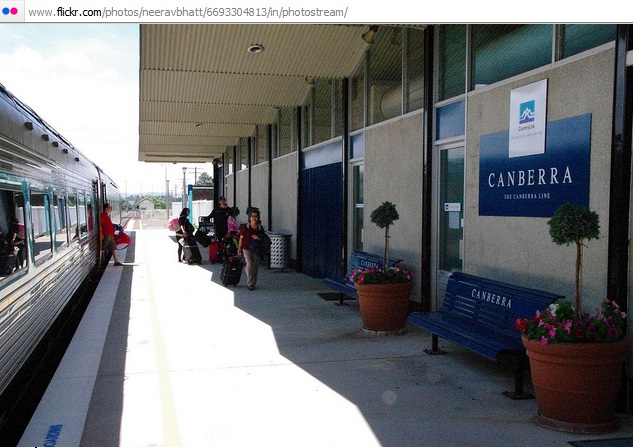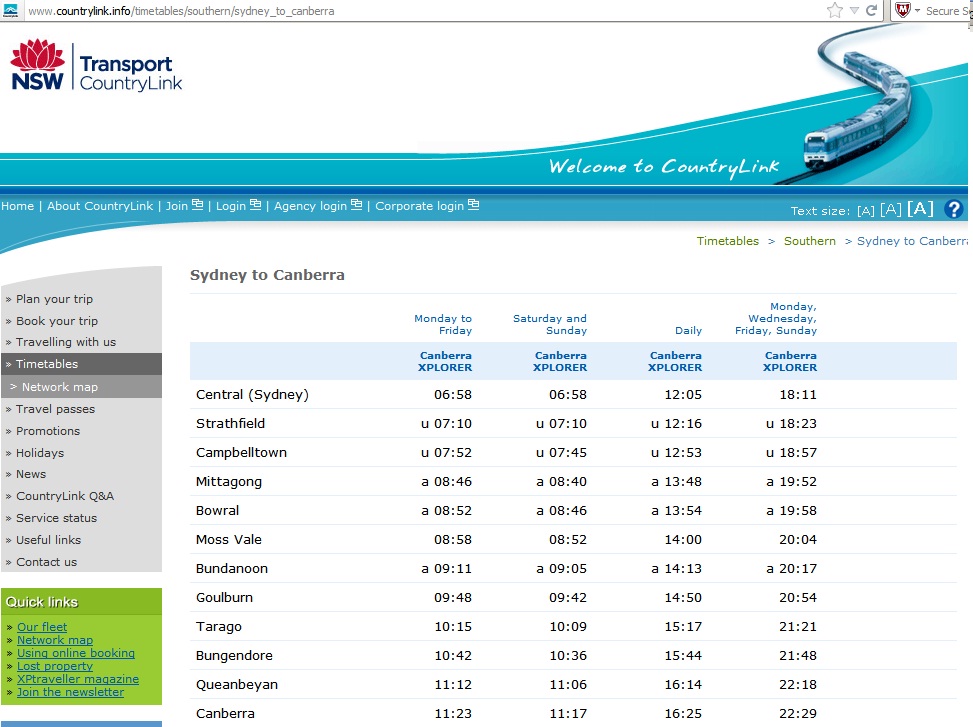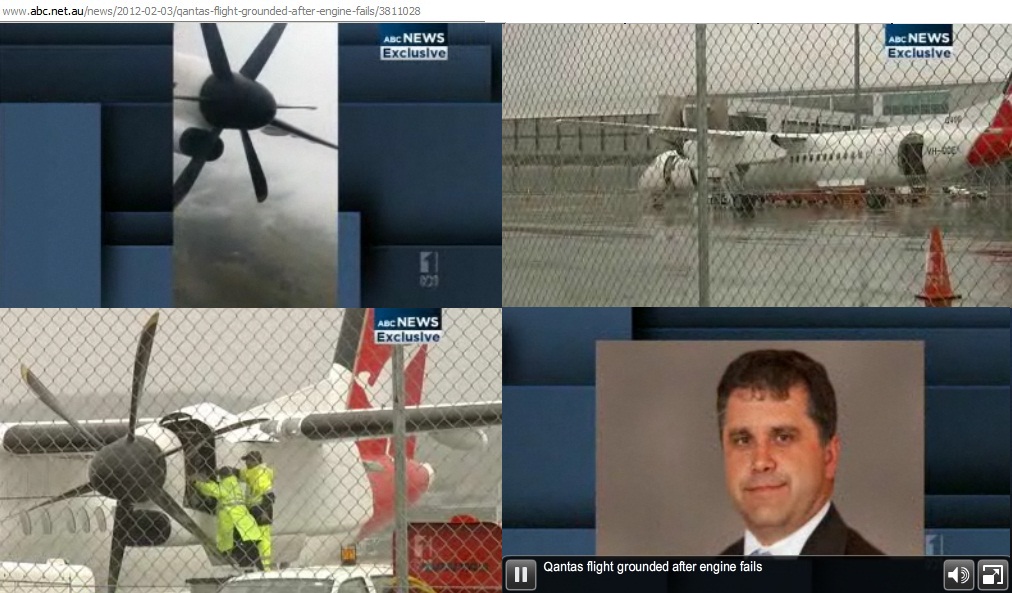 Propeller has stalled in flight, but rail development for Canberra hasn’t even taken off
Propeller has stalled in flight, but rail development for Canberra hasn’t even taken off
3/2/2012
“The Nation’s transport boss has been caught up in a mid-air drama above Canberra with a Qantas plane forced to make an emergency landing. The twin-engine Dash 8 was heading to Sydney with 74 passengers on board when it suffered engine failure….. also on board the man who keeps a watch on aviation safety, Federal Transport boss Mike Mrdak”
http://www.abc.net.au/news/2012-02-03/qantas-flight-grounded-after-engine-fails/3811028
Well, not only the boss of aviation safety but also the boss responsible for Infrastructure Australia, rail development and …..BITRE – which did not publish an internal report on peak oil in March 2009. That raises the question: why was BITRE’s peak oil report not used as a reason to urgently upgrade the rail line Canberra – Goulburn – Sydney which will be needed after most of the airlines have gone bankrupt – as a result of the combination of peak oil and the debt crisis?
This is what we find on the web site of the Department of Infrastructure:
“Mike took up his appointment as Secretary on 29 June 2009 taking responsibility for managing the Department’s portfolio interests supporting the Federal Government’s nation building infrastructure agenda and national transport reform initiatives in the road, rail, aviation and maritime sectors.
Mike is no stranger to the portfolio having begun his Australian Public Service career in 1988 as a Graduate with the then Department of Transport and Communications. He has held a number of senior positions across the portfolio.
His work with the portfolio includes management of international and domestic aviation policy and regulation, the airport sales and regulation program, infrastructure investment, the COAG competition policy reform agenda, rail investment and regulatory reform, maritime policy, emissions, energy and natural resources policy.
Between March 2008 and June 2009, Mike was Deputy Secretary (Governance) with the Department of Prime Minister and Cabinet with responsibility for government, governance, cabinet secretariat and corporate functions within PM&C.
In 2009 he was the inaugural Commonwealth Coordinator General charged with ensuring the effective implementation of key Commonwealth economic stimulus infrastructure investments.
http://www.infrastructure.gov.au/department/about/secretary.aspx
An impressive career indeed. And he has an enormous responsibility to get his department through the stormy times of declining oil production:
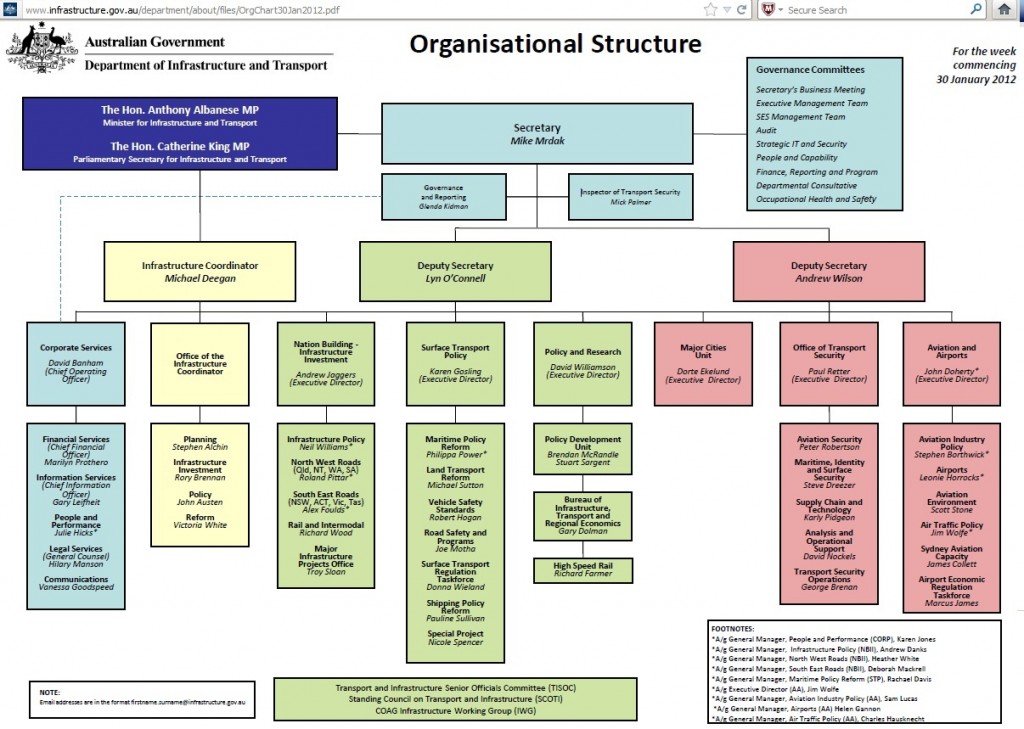 http://www.infrastructure.gov.au/department/about/files/OrgChart30Jan2012.pdf
http://www.infrastructure.gov.au/department/about/files/OrgChart30Jan2012.pdf
Let’s see what Mr. Mrdak has to say about peak oil, on 25 May 2011, more than 2 years after the BITRE 117 report was completed. Extracts from the Hansard:
Senator LUDLAM: …….. Is your department familiar with the concept of peak oil?
Mr Mrdak: Yes.
Senator LUDLAM: So what is going on?
Mr Mrdak: In relation to peak oil?
Senator LUDLAM: Yes, in relation to peak oil and the biggest road construction program in 40 years. Is there any contradiction inherent in those two concepts?
Mr Mrdak: I do not believe so. As discussed previously, the Australian government has a very large investment program. Since 2007, the Australian government has made a conscious decision to invest significantly in urban public transport, particularly heavy rail.
Senator LUDLAM: I am going to take to the public transport part of the portfolio soon.
Mr Mrdak: I want to give you quite a comprehensive investment picture.
Senator LUDLAM: I have got that.
Mr Mrdak: I do not believe there is an inherent contradiction in that. The growth of road traffic in Australia and the future demands of road traffic warrant significant investment in our road network.
Senator LUDLAM: Tell us about the future demands. I understand recent growth and it is the future demands part that unfortunately is the collision with the peak oil concept. The future demands are probably delusional.
Mr Mrdak: I do not think that is right.
Senator LUDLAM: Where are we going to be getting our oil from?
Mr Mrdak: For a decision on what alternative fuel sources may be available, a whole range of technological and vehicle investment decisions are taken. I do not think anyone is suggesting that peak oil, if and when it is reached, will reduce demand for private travel. The reality is consumers look to alternative modes of power source for travel.
Senator LUDLAM: No, they will look to public transport. As to your saying ‘if and when’, the International Energy Agency said the rollover for conventional oil was 2006. We are not having the if-and-when conversation any more.
Mr Mrdak: I do not think that debate is completely closed.
 BITRE 117 report: Peak oil if and when reached? Debate not closed?
BITRE 117 report: Peak oil if and when reached? Debate not closed?
https://www.aspo-australia.org.au/References/Bruce/BITRE-Report-117-Oil_supply_trends-2009.pdf
So the question here is: Why did the Transport Secretary not mention the BITRE 117 report on peak oil in 2017? Did he not know about the report? And if not, why not? Was he not briefed by BITRE when he joined? Oh, and by the way, peak oil in 2017 or is it? Look at the BITRE 117 report being 1 mb/d higher than the IEA Medium Term Oil Market report, for the absolutely critical country of Iran:
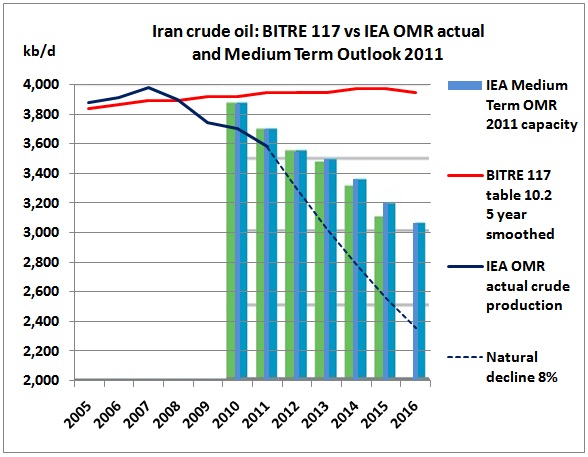 BITRE 117 estimate for Iranian crude production flying high above IEA estimate in the Medium Term Oil Market Report July 2011 and also higher than actual production. Why was that not incorporated in the draft Energy White Paper in December 2011?
BITRE 117 estimate for Iranian crude production flying high above IEA estimate in the Medium Term Oil Market Report July 2011 and also higher than actual production. Why was that not incorporated in the draft Energy White Paper in December 2011?
Interestingly, in the organisational chart “High speed rail” is in the same group “Policy and Research” as BITRE. Given the abysmal historic record of planning and then abandoning railway projects in Australia, a high speed rail network would take decades to build and commission. If peak oil were in 2017, then any such project would come too late and immediate improvements to the existing rail network would be necessary rather than wasting time on dream projects. So who is doing the coordination between the different organisations?
Here is a short list with dates of recent high speed rail studies on the BITRE website:
September 2010 available on the rail web page http://www.btre.gov.au/Info.aspx?NodeId=24
A profile of high speed railways
http://www.bitre.gov.au/publications/77/Files/A_profile_of_high-speed_railways.pdf
August 2011 available on this high speed web site
http://www.infrastructure.gov.au/rail/trains/high_speed/index.aspx
High speed rail study phase 1
Economic analysis assumed an appraisal period of 20 years from 2036, being an indicative operational year for an HSR network. (page v)
There you are, first operational year 2036, 20 years after the BITRE peak in 2016/17. That should have been done 20 years before the peak, in 1996/97. Who was in government then?
8/7/2011 “Yes, Prime Minister”, peak oil 2006 under your watch
http://crudeoilpeak.info/yes-prime-minister-peak-oil-2006-under-your-watch
First peak oil warnings came in 1996, the year in which Howard took power
http://www.oilcrisis.com/campbell/
So if Howard had immediately started with a high speed rail network in that year we would be 75% through the HSR project by now, with some shorter sections like Sydney – Canberra already completed.
Back to reality: Let’s have a look at the existing rail line to Canberra, single tracked, not electrified, a national shame:
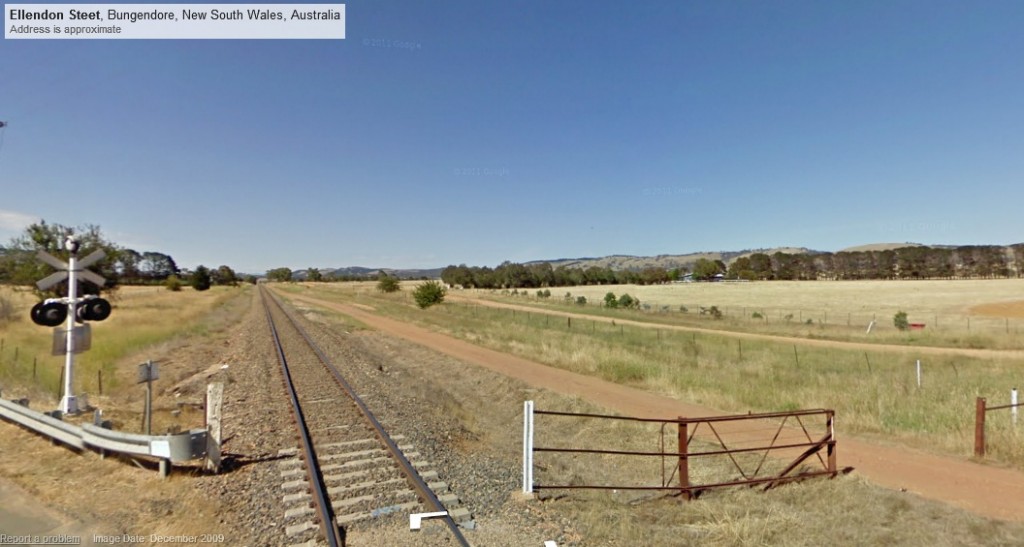 Gates not yet closed completely on rail line to Canberra
Gates not yet closed completely on rail line to Canberra
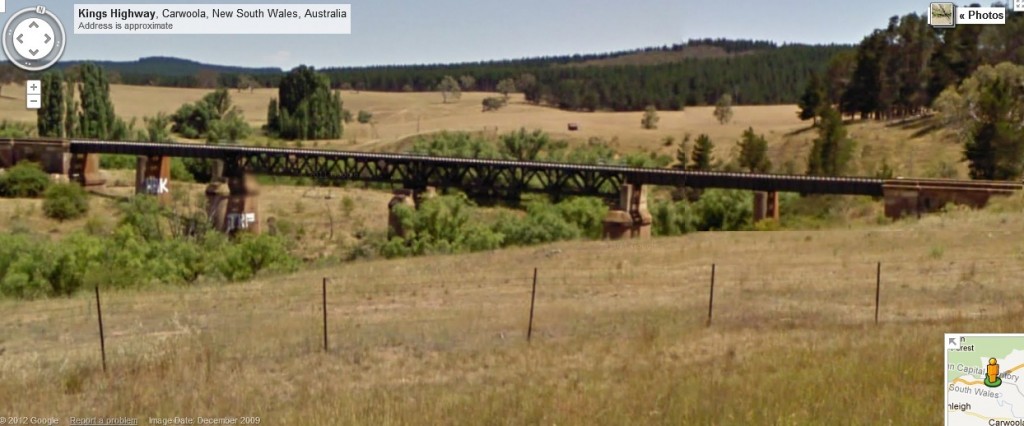 Rail bridge over Molonglo river
Rail bridge over Molonglo river
In contrast, this is the modern Kings Highway road bridge, crossing the same river nearby:
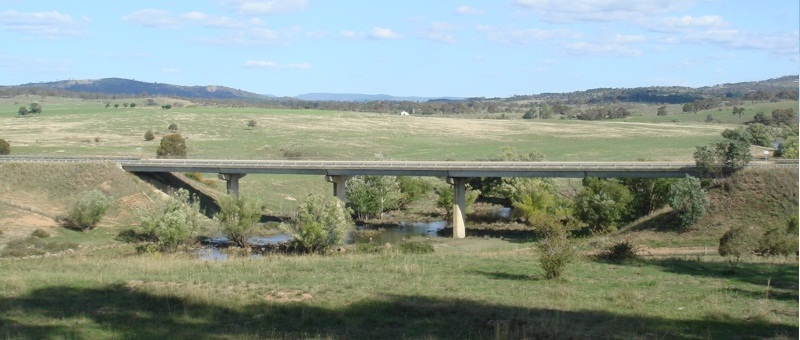 http://expressway.paulrands.com/gallery/roads/nsw/numbered/nationalroutes/nr52/03_mulloontoact/eastbound/images/201002_26_burbong_molongloriver_burbongbr.jpg
http://expressway.paulrands.com/gallery/roads/nsw/numbered/nationalroutes/nr52/03_mulloontoact/eastbound/images/201002_26_burbong_molongloriver_burbongbr.jpg
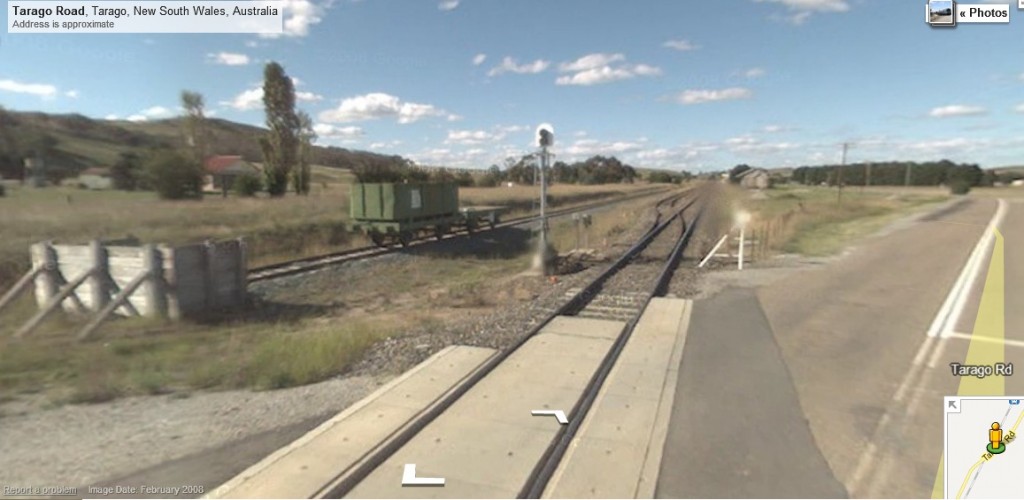 Time warp: shunted into oblivion this abandoned rail equipment waits for better times
Time warp: shunted into oblivion this abandoned rail equipment waits for better times
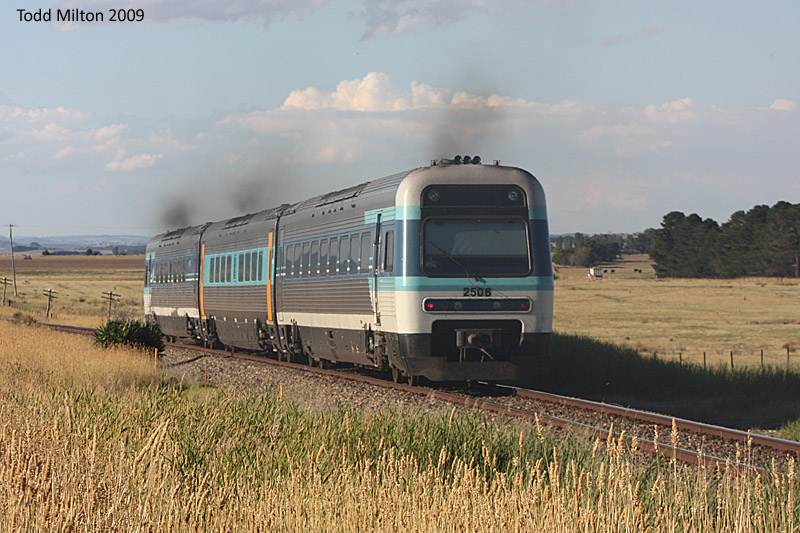 Yes, this is the 3-car train to Australia’s capital.
Yes, this is the 3-car train to Australia’s capital.
Happy journey, MPs and bureaucrats, when the airlines go bankrupt!
These are the latest news on airlines:
1/2/2012
American Airlines seeks 13,000 job cuts
http://www.nytimes.com/2012/02/02/business/american-airlines-seeks-job-cuts.html?_r=1
3/2/2012
Hungarian Malev airline ceases operations, says financial situation is unsutainable
BUDAPEST, Hungary — Hungary’s national carrier ceased operations, grounded all its flights and stranded more than 7,000 passengers Friday, blaming what it called an “unsustainable” financial situation.
Malev, which had been selling tickets as late as Thursday, has debts of around 60 billion forints ($270 million) and has been unable to find new investors.
http://www.washingtonpost.com/business/hungarys-malev-airline-ceases-operations-says-financial-situation-unsustainable/2012/02/03/gIQAt4cGmQ_story.html
But look at the trains they have:
 http://www.youtube.com/watch?v=l5owggFUO3Y
http://www.youtube.com/watch?v=l5owggFUO3Y
Related posts:
20/1/2012
Australian Peaky Leaks goes mainstream (part 1)
https://crudeoilpeak.info/australian-peaky-leaks-goes-mainstream
30/10/2011
Qantas hit by invisible hand of peak oil
https://crudeoilpeak.info/qantas-hit-by-invisible-hand-of-peak-oil
7/9/2011
NSW budget 2011/12 does not increase oil use productivity
https://crudeoilpeak.info/nsw-budget-2011_12-does-not-increase-oil-use-productivity
10/4/2011
Australia’s debating club on transport fantasies after global crude oil exports peaked 2005
https://crudeoilpeak.info/australias-debating-club-on-transport-fantasies-after-global-crude-oil-exports-peaked-2005
————-
To know more about the history of the Canberra line read from the heritage site of Engineers Australia (2. Railways): https://www.engineersaustralia.org.au/Communities-And-Groups/Special-Interest-Groups/Engineering-Heritage-Australia/Anything%2520is%2520Possible#collapse173961
Railways in the ACT 1913 – 1993
